Warning: this post contains techie stuff. Sorry, had to get that out of the way. Some people will have gone by now, you can carry on reading if you like this sort of thing.
YouTube
So, this is my first YouTube video and creating this video of the day out was no mean feat. While I work with video every day and I know the fundamentals of Non-linear Editing (NLE) I’d not had a go at such a detailed video before.
On the day I had the following with me:
- 4 x GoPro (2 x Hero 5 Black, 2 x Hero 6 Black)
- Cannon m6 mirrorless DSLR with Rode Video Mic Pro+
- iPhone X
- DJI Mavic Air Drone
My setup and thoughts on it are as follows:
- GoPro mounted to the front grille: This gave some great footage but the grille rattled on its mountings and gave some shaky footage at times. Also, the audio from it was compromised… but ok in places for establishing shots. I’ll need to see if I can stop the grille rattling – I had planned to do that prior to the run but ran out of time.
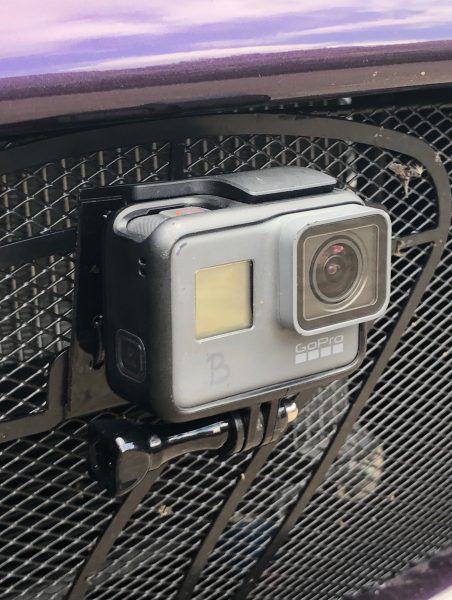
- GoPro mounted to the centre base of the windscreen: This gave us some great video of me and Joel. From the outbound fuel stop onwards gave us audio in device audio. This audio was really bad in places… I had the GoPro touching the screen I think and it kept on tapping against the glass giving a huge click on the audio. Prior to the first fuel stop Joel and I wore lav mics into a Saramonic wireless transmitter. The receiver fed into the windscreen mounted GoPro, through the GoPro USB-C audio interface, and gave reasonable audio.
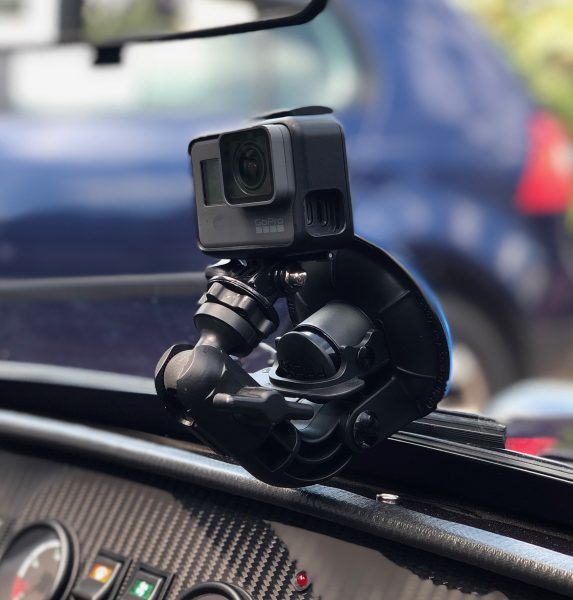
- GoPro mounted to centre roll over bar: Gave great video looking down at the road ahead, including Joel an me in the shot too. The audio from this camera was useless, as expected, when the car was moving but could be used sometimes when we were still.
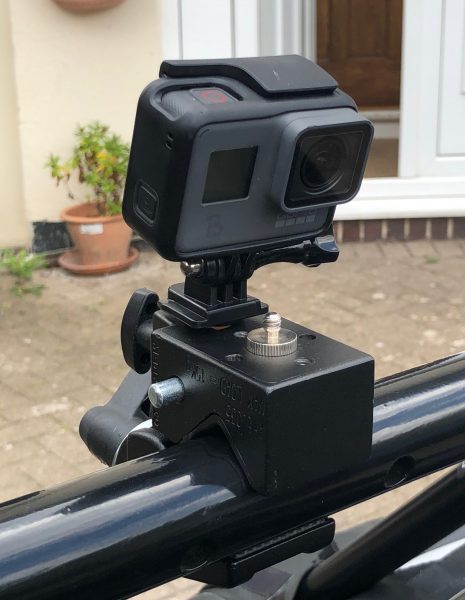
- GoPro HERO 5 Black in the boot as a spare. I also took two spare GoPro batteries, fully charged – and used both of them.
- Cannon m6: Used for taking video around the Pearcefield carpark and I tried to take video over the top of the screen as we drove along… Of course that audio was useless, and I don’t think I used any of the over-the-windscreen footage – lesson learnt there. I tried a few shots using this camera through the windscreen but there were quickly too many bug splats on the screen and the camera’s autofocus latched onto them too much. Another lesson learnt, use manual focus in those scenarios.
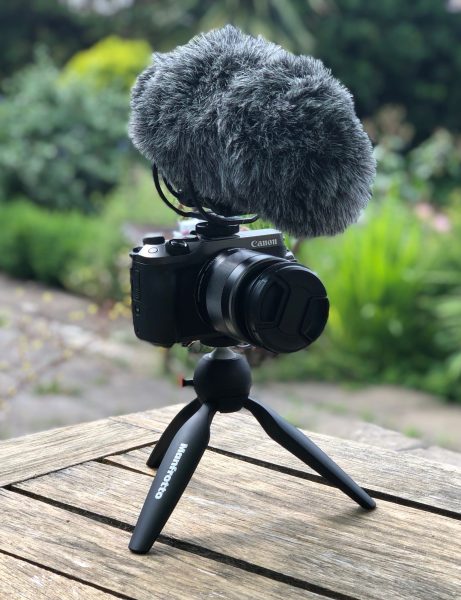
- iPhone X: As usual the iPhone was in my pocket. I took footage at the Piercefield and in the carpark in Aberdovey with it. It gives great results but I was being lazy and should have used another app (Filmic Pro) to set shutter speed and the like manually… The iPhone defaults to 60fps for video and that looks a bit sketchy when Final Cut re-rates is to 25fps.
- Mavic Air Drone: I took the Mavic Air because of it’s great video (up to 1080p) and compact size. My Mavic Pro isn’t that much bigger but its more imposing in the air and sometimes people don’t mind the Air buzzing around when they take exception to the Pro. My Phantom 4 would just be too big to get in the boot! I got some footage of the Piercfield before we left and was going to try and get a shot of the carpark in Aberdovey but it took so long to get there that I didn’t want to spend the time sticking the drone up – we needed to get back.
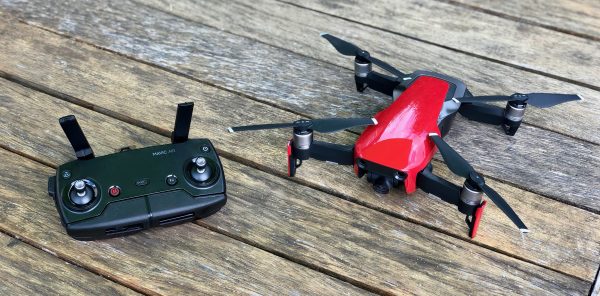
I set all the GoPro’s to take 2.7k 25fps footage and configured for wide angle rather than super-wide or linear. That allowed it to use its own image stabilisation (I chickened out on relying on it in post but might be happier with that now I know how good Final Cut can do in that respect). Going for 2.7k instead of 1080p also allowed me to crop the video down to 1080p in post without losing any resolution – 2.7k is 140% the size of 1080p so allowed a reasonable crop ratio if I needed it.
Audio on the GoPro’s was set for high noise/wind environments. It perhaps didn’t need it on the Windscreen mount but I didn’t want to swap a camera over and then forget to set the noise reduction.
Each GoPro had a 128GB card in them. Two of the three were ok for space but the one that got used as the windscreen cam the most ran out of space at the homebound fuel stop.
I did end up rotating the GoPro’s around as I switched batteries around as I charged them. The windscreen mounted dash was hooked up to a USB charing cable and allowed me to keep that topped up and switch that battery into other GoPro’s as we went along.
I’ll spare you the details of the edit for YouTube but it was a big learning curve for me. Stitching multiple GoPro segments together into compound clips and then pulling all the different camera angles together in multi-cam clips was new to me (other than some simple tests I’d done a while ago). It certainly made sense to do all the prep, colour correction, stabilisation etc on the footage at this stage – prior to dropping it into the timeline. The multicam support in Final Cut is awesome and made switching camera angles trivial instead of a right royal PITA. The exception to that is probably image stabilisation: if you do it on too long a clip then the stabilisation algorithm often crops too much of the image out to get to a stable shot… best doing stabilisation on clips in the timeline.
In all I probably spent well over 20 hours on putting this 14+ minute video together… possibly even double that if I’m honest. A baptism of fire for my first YouTube video!
In the end the Final Cut Pro timeline looked like this…
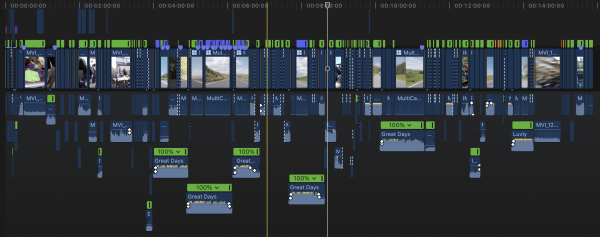
Conclusion
Other than some tweaking of the 3 main GoPro mounts I think the video is good. I do need to take a lot more B-roll (supporting shots) but that’s probably always the case.
The area where I need to spend a lot more time is on the audio. I still have lots of things to try here but I think I’ll be trying out the Zoom H6 multi-track recorder next to see if I can get some more audio sources and have more options in post.
The final result is here:




Leave a Comment